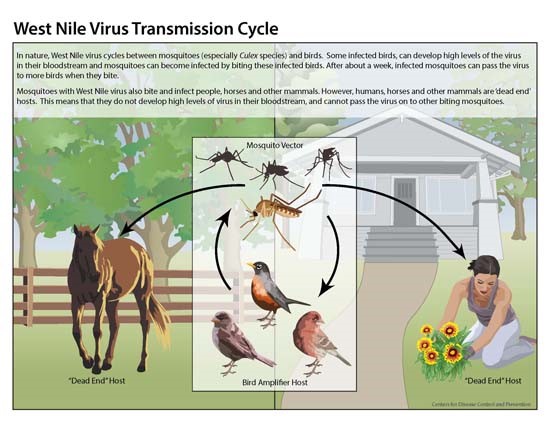Most people (about 80%) infected with WNV do not develop any symptoms.
Some people (about 20%) develop a fever and other symptoms. Signs and symptoms of WNV disease usually appear within 2–14 days of a bite from an infected mosquito. These symptoms might include headache, body aches, joint pains, vomiting, diarrhea, or rash. Most people with this type of WNV disease recover completely, but some can have persistent fatigue and weakness.
A few people (less than 1%) develop severe illness affecting the nervous system. The most common forms of severe WNV illness include encephalitis (inflammation of the brain), meningitis (inflammation of the membranes that surround the brain and spinal cord), or paralysis.
- People older than 60 years of age are at greater risk of severe illness.
- People with compromised immune systems and those with certain medical conditions (e.g., cancer, diabetes, hypertension, and kidney disease) are also at greater risk of severe illness.
- Recovery from severe illness might take months. Some complications might be permanent.
- About 10% of people who develop severe WNV illness die.


